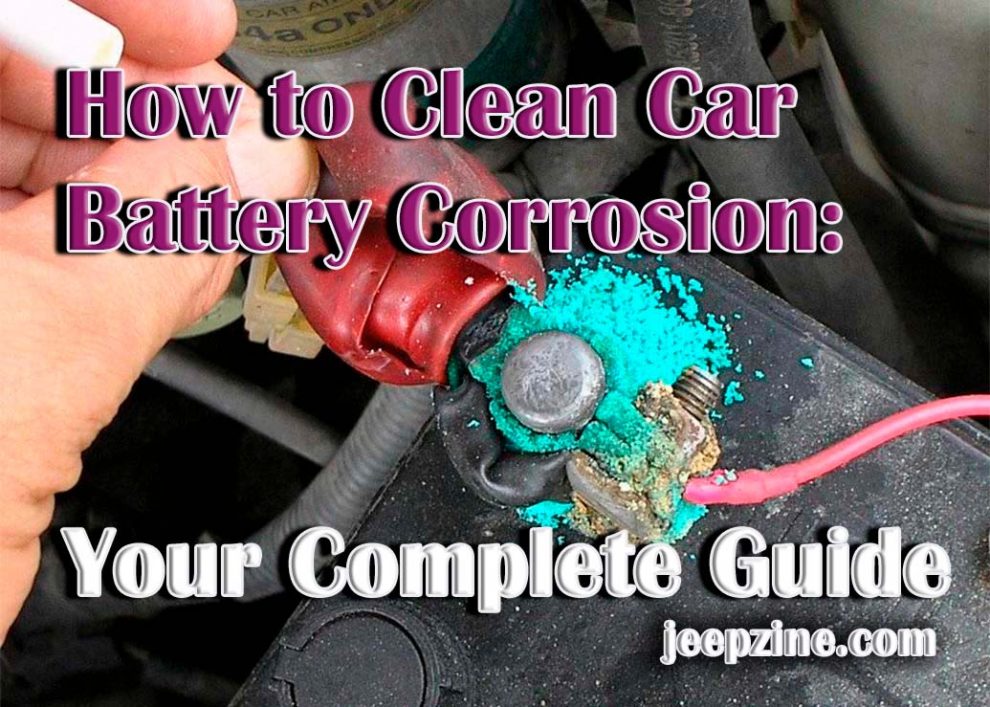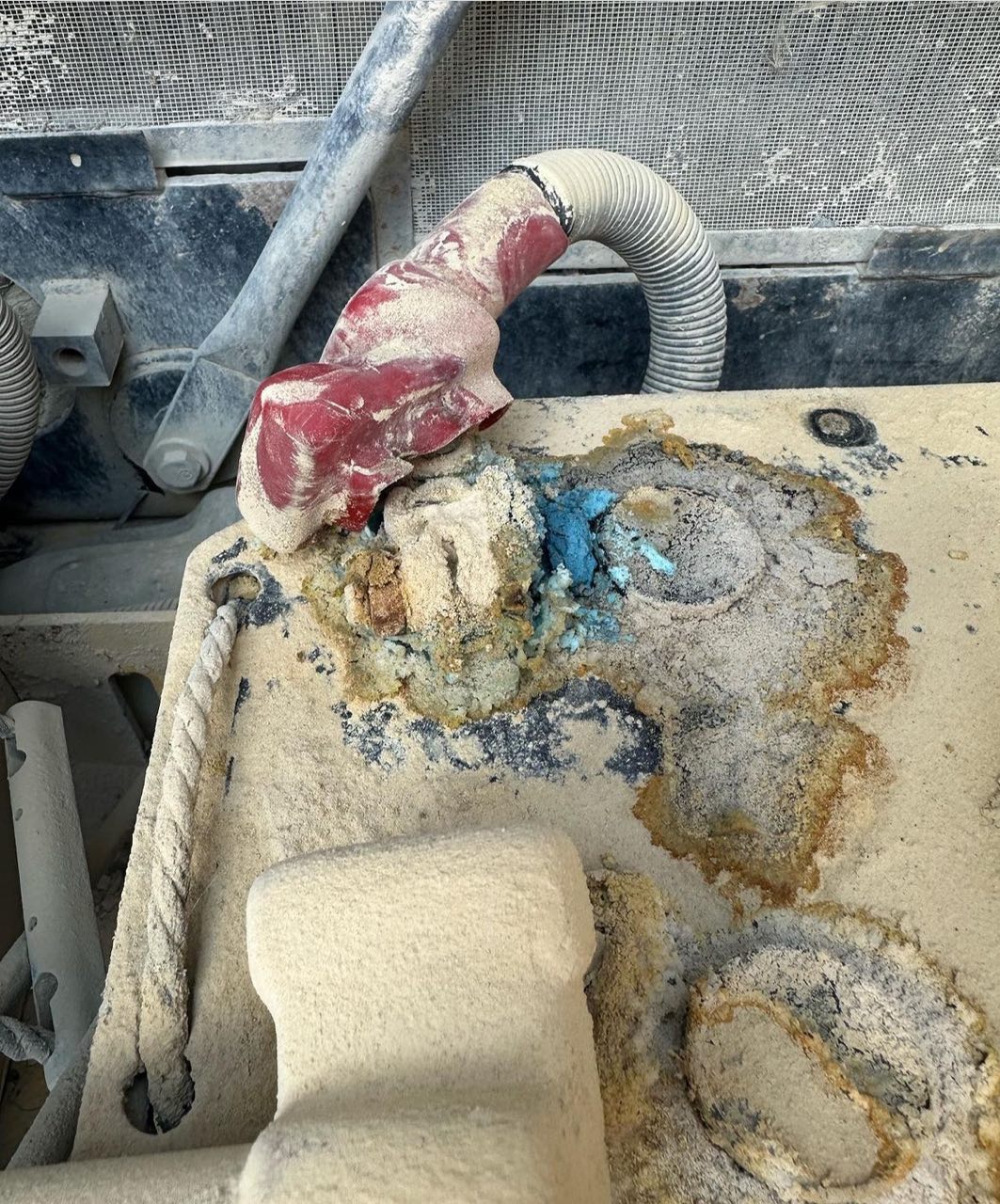The battery in your car is an essential element that enables your vehicle to ignite and supplies energy to various other accessories. However, over time, the battery terminals may develop corrosion due to chemical reactions involving battery acid. This corrosion can compromise the performance of your car and even prevent it from starting. Therefore, grasping the methods to efficiently clear away car battery corrosion is crucial for all vehicle owners. In this article we will comprehensively guide you through a step-by-step process on how to clean car battery corrosion safely and efficiently, which can enhance the longevity and functionality of your vehicle’s battery. Let’s dive in!
 Identifying Types of Battery Corrosion
Identifying Types of Battery Corrosion
Battery corrosion typically manifests in two forms: a white, powdery substance or a blue-green crust around the terminals. The white powder is usually lead sulfate, a byproduct of the battery’s discharge cycle, while the blue-green crust indicates copper sulfate, which forms when the copper from cables reacts with sulfuric acid. Recognizing these signs of corrosion is the first step toward maintaining your battery’s health. Not only do these substances indicate a need for cleaning, but they can also signal deeper issues within the battery or electrical system that may require attention. Timely identification and treatment of corrosion can prevent it from escalating into a more significant problem that impacts your vehicle’s performance.
Essential Tools and Materials for Cleaning
Before you begin the cleaning process, it’s crucial to assemble all required tools and materials to ensure the task is performed safely and efficiently. You’ll need a pair of protective gloves to shield your hands from corrosive materials, safety goggles to protect your eyes, a wire brush or toothbrush for scrubbing, baking soda to neutralize the acid, water to rinse the area, and petroleum jelly to prevent future corrosion. Additionally, having a clean cloth or paper towel on hand for drying and cleaning up is useful. These tools and materials are easily accessible and play a pivotal role in safely removing corrosion, ensuring you can restore your battery’s terminals to optimal condition.
Step-by-Step Guide to Removing Battery Corrosion
Safely and effectively removing battery corrosion is crucial for maintaining your vehicle’s electrical health. This process involves a series of steps that neutralize corrosive substances and restore the integrity of your battery’s connection points. Here’s how you can achieve a clean, corrosion-free battery:
Turn Off the Vehicle – Make sure the engine is off and the battery has cooled down before starting.
Disconnect Battery Cables – Begin with the negative cable to prevent electrical shorts, then proceed to remove the positive cable.
Prepare Cleaning Solution – Mix a tablespoon of baking soda with a cup of water to create a neutralizing solution.
Apply Solution and Scrub – Use the solution on the corroded areas and gently scrub with a brush to remove the buildup.
Rinse with Water – Gently wash away the cleaning mixture and any detached corrosion using water.
Dry Thoroughly – Ensure all cleaned areas are completely dry before proceeding.
Apply Petroleum Jelly – Spread a slender coating of petroleum jelly over the terminals to prevent future corrosion development.
Reconnect Cables – Attach the positive cable first, followed by the negative, ensuring a secure connection.
Preventive Measures to Avoid Future Corrosion
Preventing future battery corrosion is just as important as removing existing buildup. Regularly inspecting your battery for signs of wear and corrosion is key. Coating the terminals with a slender layer of petroleum jelly or using an anti-corrosion spray commercially available after cleansing can greatly diminish the likelihood of corrosion forming. Additionally, ensuring that your battery is securely mounted, and that the electrical system is functioning correctly can prevent excessive vibration and the leaking of battery acid, both of which can cause corrosion. Keeping the battery and its terminals clean and dry will further help to minimize the risk of corrosive buildup, maintaining your vehicle’s reliability and performance.
Conclusion
Removing corrosion from a battery is an essential upkeep duty that must not be neglected. By following the steps outlined in this guide, you can effectively remove corrosion and take preventive measures to ensure it doesn’t return. Regular maintenance and timely intervention can extend the life of your car battery and improve your vehicle’s overall performance. Remember, while cleaning battery corrosion is a task many car owners can perform themselves, when in doubt, seeking professional assistance is always the best course of action to ensure the safety and longevity of your vehicle.


 Identifying Types of Battery Corrosion
Identifying Types of Battery Corrosion